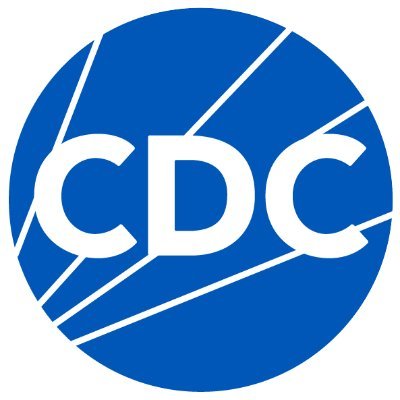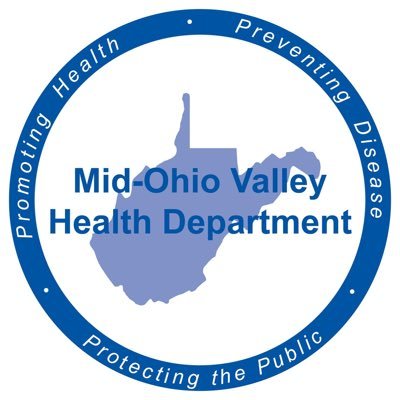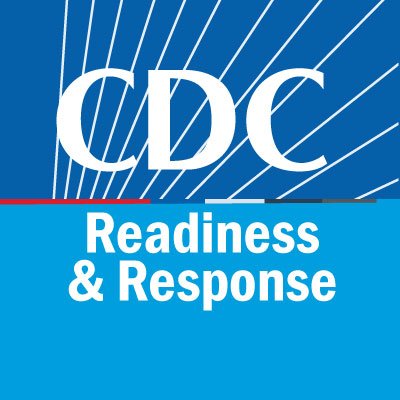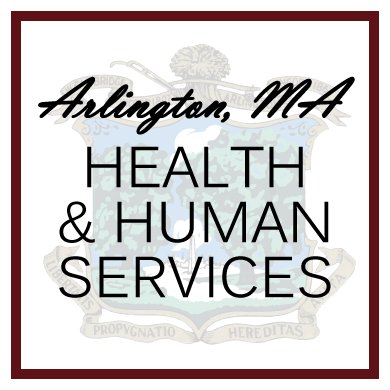#cdcehblog search results
Do you know how to help someone with frostbite? Place the frostbitten area in warm (not hot) water. Do NOT rub, massage, or walk on the affected area. Learn more on the #CDCEHblog: bit.ly/3WELgY9

Carbon monoxide (CO) can be deadly. Install a working CO detector, vent all gas appliances, and use generators at least 20 feet away from any door, window, or vent. Read the #CDCEHblog for more tips to prevent #COpoisoning: bit.ly/3YcbUIJ

For #MentalHealthAwarenessMonth, take some time to learn about the relationship between #ClimateChange and mental health. Read the latest #CDCEHblog: bit.ly/3KVDMcR

#DYK? Carbon monoxide (CO) poisoning is often confused with the flu. Symptoms include headache, dizziness, weakness, and upset stomach. If you suspect you might have #COpoisoning, go outdoors and get medical care immediately. Learn more: bit.ly/3YcbUIJ #CDCEHblog

Earth Day and Environmental Justice: Connected and Working Together Side-By-Side. Learn how at bit.ly/3KSz1l7. #CDCEHblog #EarthDay

May is #MentalHealthAwarenessMonth. Read our latest blog to learn about steps you, your family, and your community can take to cope after natural disasters, like hurricanes and earthquakes. bit.ly/37QYey6. #CDCEHBlog

You can’t see, smell, or hear carbon monoxide (CO), but it can be deadly. Know the steps to prevent #COpoisoning in your home and car this winter: bit.ly/3YcbUIJ #CDCEHblog

Emergencies can happen anytime. Ensure children are prepared for the unexpected. Go over your emergency plan with your family and always keep an emergency kit at home and in your car. Learn more: bit.ly/2XHy5Nr. #PrepYourHealth #CDCEHblog

Healthcare providers: January is #RadonActionMonth. Learn about the role you can play in informing patients about #radon and limiting the effects of exposures. Read the latest #CDCEHblog: bit.ly/3G1jw7g. #RadonAwarenessWeek

During #wildfires, particles from smoke and ash can enter your body and harm your health. Learn how you can protect your health from wildfire smoke: bit.ly/3vVcGgu. #WildfireAwarenessMonth #CDCEHblog

This Air Quality Awareness Week, take some time to learn how you can protect your health from exposure to #wildfire smoke. Read the new #CDCEHblog here: bit.ly/3vVcGgu. #AQAW2022

A4: CDC's Your Health – Your Environment Blog shares information about various environmental health topics. Recent posts discuss managing asthma during disasters, climate change, and coping after natural disasters. Read the #CDCEHblog: bit.ly/3Qeakld #GetToKnowYourGov

Q4: What kind of questions can you find answers to through your agency website, contact center, and other channels? #GetToKnowYourGov

#DYK? Every year, at least 420 people die and more than 100,000 people visit the emergency department for accidental carbon monoxide (CO) poisoning. Review how to stay safe from #COpoisoning. Discover the #CDCEHblog: bit.ly/3YcbUIJ

June is #National Fireworks Safety Month! Ask your family & friends to protect their hearing while enjoying their favorite activities this summer. Grab your earplugs or earmuffs and let the fun begin. bit.ly/3mJSJoJ #CDCEHblog via @CDCEnvironment

#DYK climate change can affect your mental health? Learn more and find out how communities and public health officials can plan for the health impacts of a changing climate: bit.ly/3KVDMcR. #CDCEHblog #MentalHealthAwarenessMonth

Today is #WorldMentalHealthDay. Read the #CDCEHblog to learn about steps you, your family, and your community can take to cope after natural disasters, like hurricanes and earthquakes. bit.ly/37QYey6

Martin Luther King Jr. and Environmental Justice: A Leader Ahead of His Time. bit.ly/3FsQYmQ #CDCEHblog via @CDCEnvironment #MLK

Carbon monoxide (CO) can be deadly. Install a working CO detector, vent all gas appliances, and use generators outdoors and at least 20 feet away from any door, window, or vent. Read the #CDCEHblog for more tips to prevent #COpoisoning: bit.ly/3YcbUIJ. #PrepYourHealth

Did you know people with #asthma face additional risks during emergencies like hurricanes or floods? #PrepYourHealth now. Learn how by reading the latest #CDCEHblog: bit.ly/3BDoDvO.

Wondering what it’s like to work with CDC and #ATSDR? Hear from our summer intern about her experience contributing to the work of the Office of Communication. bit.ly/3CLvf9j #CDCEHblog

You can’t see, smell, or hear carbon monoxide (CO), but it can be deadly. Know the steps to prevent #COpoisoning in your home and car this winter: bit.ly/3YcbUIJ #CDCEHblog

#DYK? Every year, at least 420 people die and more than 100,000 people visit the emergency department for accidental carbon monoxide (CO) poisoning. Review how to stay safe from #COpoisoning. Discover the #CDCEHblog: bit.ly/3YcbUIJ

Stay safe in cold weather! The #CDCEHblog has important information on protecting yourself and others from #frostbite and #hypothermia: bit.ly/3WELgY9 #WinterWeather

June is National #FireworksSafety Month! Ask your family & friends to protect their hearing while enjoying their favorite activities this summer. Grab your earplugs or earmuffs and let the fun begin. bit.ly/3mJSJoJ #CDCEHblog via @CDCEnvironment

June is #National Fireworks Safety Month! Ask your family & friends to protect their hearing while enjoying their favorite activities this summer. Grab your earplugs or earmuffs and let the fun begin. bit.ly/3mJSJoJ #CDCEHblog via @CDCEnvironment

Stay safe in cold weather! The #CDCEHblog has important information on protecting yourself and others from #frostbite and #hypothermia: bit.ly/3WELgY9 #WinterWeather

You can’t see, smell, or hear carbon monoxide (CO), but it can be deadly. Learn steps to prevent #COpoisoning in your home and car this winter: bit.ly/3YcbUIJ #CDCEHblog

Carbon monoxide (CO) can be deadly. Install a working CO detector, vent all gas appliances, and use generators outdoors and at least 20 feet away from any door, window, or vent. Read the #CDCEHblog for more tips to prevent #COpoisoning: bit.ly/3YcbUIJ. #PrepYourHealth

Carbon monoxide (CO) can be deadly. Install a working CO detector, vent all gas appliances, and use generators outdoors and at least 20 feet away from any door, window, or vent. Read the #CDCEHblog for more tips to prevent #COpoisoning: bit.ly/3YcbUIJ. #PrepYourHealth

#DYK? Every year, at least 420 people die and more than 100,000 people visit the emergency department for accidental carbon monoxide (CO) poisoning. Learn how to stay safe from #COpoisoning. Read the latest #CDCEHblog: bit.ly/3YcbUIJ

Do you know how to help someone with frostbite? Place the frostbitten area in warm (not hot) water. Do NOT rub, massage, or walk on the affected area. Learn more on the #CDCEHblog: bit.ly/3WELgY9

Carbon monoxide (CO) can be deadly. Install a working CO detector, vent all gas appliances, and use generators at least 20 feet away from any door, window, or vent. Read the #CDCEHblog for more tips to prevent #COpoisoning: bit.ly/3YcbUIJ

#DYK? Carbon monoxide (CO) poisoning is often confused with the flu. Symptoms include headache, dizziness, weakness, and upset stomach. If you suspect you might have #COpoisoning, go outdoors and get medical care immediately. Learn more: bit.ly/3YcbUIJ #CDCEHblog

Stay safe in cold weather! The #CDCEHblog has important information on protecting yourself and others from #frostbite and #hypothermia: bit.ly/3WELgY9 #WinterWeather

#DYK climate change can affect your mental health? Learn more and find out how communities and public health officials can plan for the health impacts of a changing climate: bit.ly/3KVDMcR. #CDCEHblog #WorldMentalHealthDay #ClimateChangesHealth

Today is #WorldMentalHealthDay. Read the #CDCEHblog to learn about steps you, your family, and your community can take to cope after natural disasters, like hurricanes and earthquakes. bit.ly/37QYey6

A4: CDC's Your Health – Your Environment Blog shares information about various environmental health topics. Recent posts discuss managing asthma during disasters, climate change, and coping after natural disasters. Read the #CDCEHblog: bit.ly/3Qeakld #GetToKnowYourGov

Q4: What kind of questions can you find answers to through your agency website, contact center, and other channels? #GetToKnowYourGov

Living with #asthma? You can manage your condition during hurricanes by having an Asthma Action Plan, avoiding mold and other asthma triggers, and keeping your hands clean. Learn more by reading the #CDCEHblog: bit.ly/3BDoDvO. @CDCasthma

Did you know people with #asthma face additional risks during emergencies like hurricanes or floods? #PrepYourHealth now. Learn how by reading the latest #CDCEHblog: buff.ly/3zN86D4.

Did you know people with #asthma face additional risks during emergencies like hurricanes or floods? #PrepYourHealth now. Learn how by reading the latest #CDCEHblog: bit.ly/3BDoDvO.

Do you know how to help someone with frostbite? Place the frostbitten area in warm (not hot) water. Do NOT rub, massage, or walk on the affected area. Learn more on the #CDCEHblog: bit.ly/3WELgY9

For #MentalHealthAwarenessMonth, take some time to learn about the relationship between #ClimateChange and mental health. Read the latest #CDCEHblog: bit.ly/3KVDMcR

Carbon monoxide (CO) can be deadly. Install a working CO detector, vent all gas appliances, and use generators at least 20 feet away from any door, window, or vent. Read the #CDCEHblog for more tips to prevent #COpoisoning: bit.ly/3YcbUIJ

Earth Day and Environmental Justice: Connected and Working Together Side-By-Side. Learn how at bit.ly/3KSz1l7. #CDCEHblog #EarthDay

You can’t see, smell, or hear carbon monoxide (CO), but it can be deadly. Know the steps to prevent #COpoisoning in your home and car this winter: bit.ly/3YcbUIJ #CDCEHblog

#DYK? Carbon monoxide (CO) poisoning is often confused with the flu. Symptoms include headache, dizziness, weakness, and upset stomach. If you suspect you might have #COpoisoning, go outdoors and get medical care immediately. Learn more: bit.ly/3YcbUIJ #CDCEHblog

Healthcare providers: January is #RadonActionMonth. Learn about the role you can play in informing patients about #radon and limiting the effects of exposures. Read the latest #CDCEHblog: bit.ly/3G1jw7g. #RadonAwarenessWeek

During #wildfires, particles from smoke and ash can enter your body and harm your health. Learn how you can protect your health from wildfire smoke: bit.ly/3vVcGgu. #WildfireAwarenessMonth #CDCEHblog

This Air Quality Awareness Week, take some time to learn how you can protect your health from exposure to #wildfire smoke. Read the new #CDCEHblog here: bit.ly/3vVcGgu. #AQAW2022

May is #MentalHealthAwarenessMonth. Read our latest blog to learn about steps you, your family, and your community can take to cope after natural disasters, like hurricanes and earthquakes. bit.ly/37QYey6. #CDCEHBlog

Emergencies can happen anytime. Ensure children are prepared for the unexpected. Go over your emergency plan with your family and always keep an emergency kit at home and in your car. Learn more: bit.ly/2XHy5Nr. #PrepYourHealth #CDCEHblog

Martin Luther King Jr. and Environmental Justice: A Leader Ahead of His Time. bit.ly/3FsQYmQ #CDCEHblog via @CDCEnvironment #MLK

#DYK? Every year, at least 420 people die and more than 100,000 people visit the emergency department for accidental carbon monoxide (CO) poisoning. Review how to stay safe from #COpoisoning. Discover the #CDCEHblog: bit.ly/3YcbUIJ

#DYK climate change can affect your mental health? Learn more and find out how communities and public health officials can plan for the health impacts of a changing climate: bit.ly/3KVDMcR. #CDCEHblog #MentalHealthAwarenessMonth

Today is #WorldMentalHealthDay. Read the #CDCEHblog to learn about steps you, your family, and your community can take to cope after natural disasters, like hurricanes and earthquakes. bit.ly/37QYey6

Stay safe in cold weather! The #CDCEHblog has important information on protecting yourself and others from #frostbite and #hypothermia: bit.ly/3WELgY9 #WinterWeather

Living with #asthma? You can manage your condition during hurricanes by having an Asthma Action Plan, avoiding mold and other asthma triggers, and keeping your hands clean. Learn more by reading the #CDCEHblog: bit.ly/3BDoDvO. @CDCasthma

A4: CDC's Your Health – Your Environment Blog shares information about various environmental health topics. Recent posts discuss managing asthma during disasters, climate change, and coping after natural disasters. Read the #CDCEHblog: bit.ly/3Qeakld #GetToKnowYourGov

Q4: What kind of questions can you find answers to through your agency website, contact center, and other channels? #GetToKnowYourGov

Wondering what it’s like to work with CDC and #ATSDR? Hear from our summer intern about her experience contributing to the work of the Office of Communication. bit.ly/3CLvf9j #CDCEHblog

.@CDCEnvironment's Paul Schramm shared insights on "How Climate Change Can Affect Your Mental Health" in this recent #CDCEHblog. Visit:blogs.cdc.gov/yourhealthyour… to read the full post. #ClimateChangesHealth #MentalHealthAwarenessMonth

Something went wrong.
Something went wrong.
United States Trends
- 1. #SmackDown 35.9K posts
- 2. Zack Ryder 9,772 posts
- 3. Landry Shamet 3,207 posts
- 4. Matt Cardona 1,869 posts
- 5. #OPLive 1,409 posts
- 6. Clemson 5,800 posts
- 7. #BostonBlue 1,075 posts
- 8. LA Knight 7,459 posts
- 9. #TNATurningPoint 5,231 posts
- 10. Josh Hart 1,240 posts
- 11. Bronson Reed 1,525 posts
- 12. Marjorie Taylor Greene 24.9K posts
- 13. #Knicks N/A
- 14. Nikes 1,655 posts
- 15. Bill Clinton 155K posts
- 16. End 3Q N/A
- 17. Ersson N/A
- 18. Bubba 46.5K posts
- 19. Clarkson 6,518 posts
- 20. Jey Uso 4,232 posts








